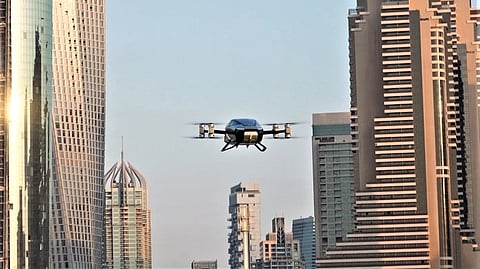XPENG X2 Conducts First Global Public Flight in Dubai
XPENG AEROHT, the largest flying car company in Asia and an affiliate of XPENG, conducted the first flight of its electric flying car, the XPENG X2, at Skydive Dubai, on Monday.
The XPeng X2 is developed by the Guangzhou-based XPeng Inc’s aviation affiliate. The sleekly designed vehicle can carry two passengers and is powered by a set of eight propellers. The model has a top speed of 130 kilometers (80 miles) per hour.
TRSDC Named daa International as operator for RSI Airport
This first flight was witnessed by over 150 attendees, including representatives from the Chinese Consulate in Dubai, the Dubai International Chamber of Commerce, the DCAA, the Dubai Department of Economy and Tourism, the Dubai World Trade Centre and global media.
Brian Gu, Vice Chairman and President of XPENG, commented: "XPENG X2's public display in Dubai represents a significant milestone for XPENG AEROHT and the international achievement of flying cars.
"Dubai is a world-renowned 'City of Innovation', which is the reason we decided to hold the X2 first public flight event here. This flight is a major step in XPENG's exploration of future mobility."
The Dubai Chamber has been deeply involved in the whole process since the launch of the project, providing strategic consulting to XPENG AEROHT.
Hassan Al Hashemi, Acting President and CEO attended the event and cited in his speech: "The first global public flight of the X2 flying car will change the game of future mobility.
"The flying car is the epitome of ambition, innovation and future-oriented vision that has always inspired Dubai and its leadership. Today, we witnessed a historic moment that will define the next 50 years."
The two-seater flying car does not produce any carbon dioxide emissions and is a step forward in the pursuit of urban green transportation. It will be suitable for future low-altitude city flights and is perfect for short-distance city journeys such as sightseeing and medical transportation.
Read more: Avis, One Moto to Satisfy Demand for Electric Delivery Vehicles


